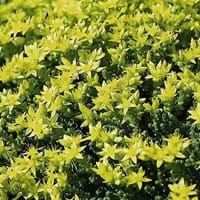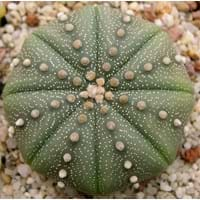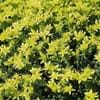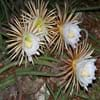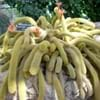Life Span
Perennial
Perennial
Type
Herbs
Ornamental Plant
Origin
Central Asia
Not Available
Types
Not Available
Not Available
Habitat
Barren waste areas, Dry areas, meadows, Roadsides, Sandy stream banks
Desert, Semi desert
USDA Hardiness Zone
4-9
12-15
Sunset Zone
1a, 1b, 2a, 2b, 3a, 3b, 4, 5, 6, 7, 8, 9, 10, 11, 14, 15, 16, 17, 18, 19, 20, 21, 22, 23, 24
21, 22, 23, 24
Habit
Cushion/Mound-forming
Oval or Rounded
Minimum Width
Not Available
Flower Color
White, Ivory
Yellow
Flower Color Modifier
Not Available
Not Available
Fruit Color
Not Available
Non Fruiting Plant
Leaf Color in Spring
Light Green, Sea Green, Blue Green
Not Available
Leaf Color in Summer
Light Green, Sea Green, Blue Green
Not Available
Leaf Color in Fall
Light Green, Sea Green, Blue Green
Not Available
Leaf Color in Winter
Light Green, Sea Green, Blue Green
Not Available
Leaf Shape
Oblique base
Elliptic
Plant Season
Spring, Summer, Fall
Not Available
Sunlight
Full Sun, Partial Sun
Not Available
Growth Rate
Slow
Very Slow
Type of Soil
Loam, Sand
Not Available
The pH of Soil
Acidic, Neutral, Alkaline
Not Available
Soil Drainage
Well drained
Not Available
Bloom Time
Early Summer, Summer
Spring
Repeat Bloomer
No
Not Available
Tolerances
Pollution, Drought
Not Available
Where to Plant?
Ground
Container, Ground, Pot
How to Plant?
Leaf Cutting, Stem Planting
Cuttings, Stem Cutting
Plant Maintenance
Medium
Medium
Watering Requirements
Needs very little water
Needs very little water
In Summer
Lots of watering
Lots of watering
In Spring
Moderate
Moderate
In Winter
Average Water
Average Water
Soil pH
Acidic, Neutral, Alkaline
Not Available
Soil Type
Loam, Sand
Not Available
Soil Drainage Capacity
Well drained
Not Available
Sun Exposure
Full Sun, Partial Sun
Not Available
Pruning
Remove damaged leaves, Remove dead branches, Remove dead leaves
Remove damaged leaves, Remove dead branches, Remove dead leaves
Fertilizers
All-Purpose Liquid Fertilizer
All-Purpose Liquid Fertilizer
Pests and Diseases
Red blotch
Mealy bugs
Plant Tolerance
Drought
Drought
Flowers
Showy
Not Available
Flower Petal Number
Single
Single
Fragrant Fruit
No
Not Available
Fragrant Bark/Stem
No
Not Available
Showy Foliage
Yes
Not Available
Showy Bark
No
Not Available
Foliage Texture
Bold
Bold
Foliage Sheen
Matte
Not Available
Invasive
No
Not Available
Self-Sowing
No
Not Available
Attracts
Bees
Hummingbirds
Allergy
Irritation to stomach, Skin irritation
Not Available
Aesthetic Uses
Beautification, Cottage Garden, Showy Purposes
Showy Purposes
Beauty Benefits
Reduce Bruises
Not Available
Environmental Uses
Air purification
Air purification
Medicinal Uses
Astringent, Hypotensive, Laxative, Vitamin C
No Medicinal Use
Part of Plant Used
Leaves
Not Available
Other Uses
Used as Ornamental plant, useful as a ground cover
Not Available
Used As Indoor Plant
No
Yes
Used As Outdoor Plant
Yes
Yes
Garden Design
Container, Groundcover, Rock Garden, Wall
Bedding Plant
Botanical Name
Sedum acre
Astrophytum myriostigma
Common Name
Stonecrop
Bishop's Cap Cactus, Bishop's Hat, Bishop's Miter Cactus ,Star Cactus
In Hindi
Stonecrop
Star Cactus
In German
Stonecrop
Star Cactus
In French
Orpin
Star Cactus
In Spanish
uva de gato
Star Cactus
In Greek
Stonecrop
Star Cactus
In Portuguese
Stonecrop
Star Cactus
In Polish
rozchodnika
Star Cactus
In Latin
Sedum
Star Cactus
Phylum
Magnoliophyta
Magnoliophyta
Class
Magnoliopsida
Magnoliopsida
Order
Saxifragales
Caryophyllales
Family
Crassulaceae
Cactaceae
Clade
Angiosperms, Core eudicots, Eudicots
Angiosperms, Core eudicots, Eudicots
Subfamily
Sedoideae
Cactoideae
Properties of Stonecrop and Bishop's Cap Cactus
Wondering what are the properties of Stonecrop and Bishop's Cap Cactus? We provide you with everything About Stonecrop and Bishop's Cap Cactus. Stonecrop doesn't have thorns and Bishop's Cap Cactus doesn't have thorns. Also Stonecrop does not have fragrant flowers. Stonecrop has allergic reactions like Irritation to stomach and Skin irritation and Bishop's Cap Cactus has allergic reactions like Irritation to stomach and Skin irritation. Compare all the properties and characteristics of these two plants. Find out which of these plant can be used as indoor plant. If you are interested to decorate your house and garden, find out aesthetic uses, compare them and select the plant which will beautify your surrounding. Along with beautification, try comparing medicinal and edible uses of Stonecrop and Bishop's Cap Cactus and you can choose the plant having best and most benefits.
Season and Care of Stonecrop and Bishop's Cap Cactus
Season and care of Stonecrop and Bishop's Cap Cactus is important to know. While considering everything about Stonecrop and Bishop's Cap Cactus Care, growing season is an essential factor. Stonecrop season is Spring, Summer and Fall and Bishop's Cap Cactus season is Spring, Summer and Fall. The type of soil for Stonecrop is Loam, Sand and for Bishop's Cap Cactus is Not Available while the PH of soil for Stonecrop is Acidic, Neutral, Alkaline and for Bishop's Cap Cactus is Not Available.
Stonecrop and Bishop's Cap Cactus Physical Information
Stonecrop and Bishop's Cap Cactus physical information is very important for comparison. Stonecrop height is 5.00 cm and width Not Available whereas Bishop's Cap Cactus height is 25.00 cm and width 20.30 cm. The color specification of Stonecrop and Bishop's Cap Cactus are as follows:
Stonecrop flower color: White and Ivory
Stonecrop leaf color: Light Green, Sea Green and Blue Green
Bishop's Cap Cactus flower color: Yellow
- Bishop's Cap Cactus leaf color: Not Available
Care of Stonecrop and Bishop's Cap Cactus
Care of Stonecrop and Bishop's Cap Cactus include pruning, fertilizers, watering etc. Stonecrop pruning is done Remove damaged leaves, Remove dead branches and Remove dead leaves and Bishop's Cap Cactus pruning is done Remove damaged leaves, Remove dead branches and Remove dead leaves. In summer Stonecrop needs Lots of watering and in winter, it needs Average Water. Whereas, in summer Bishop's Cap Cactus needs Lots of watering and in winter, it needs Average Water.
